Hello good friends of the HIVE community, today I want to tell you about poisons that can be deadly for our pets and that we frequently consume at home, because we can no longer live without them.
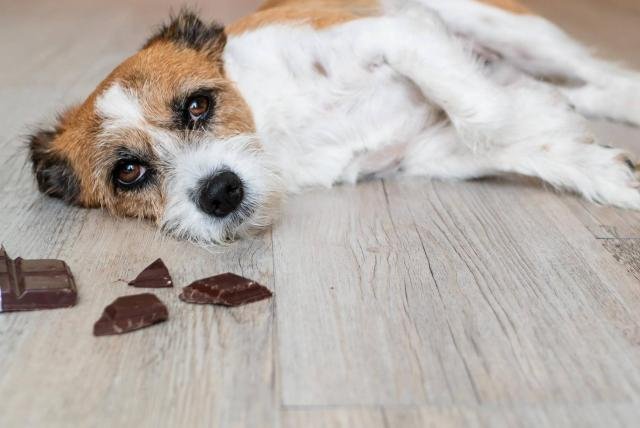
Font: https//:www.eltiempo.com
I imagine that everyone has already heard that Chocolate, that tasty candy that drives us crazy and that according to some research, can stimulate the pleasure center in our brains, as much as good sex, is toxic to our dogs and cats, but. .....
How true is this?
How much should my pet eat to harm him?
Why this happens?
What can I do if my dog or cat has accidentally eaten this food?
These are some of the questions we will answer. Stay with me, don't go, we'll be as practical as possible.
You have to be very careful with the food that is left within the reach of dogs and cats, because even if they like certain foods, it does not mean that they are healthy for them. Indeed, chocolate is among the list of toxic foods for dogs and cats, the reason being a molecule called THEOBROMINE that their body is not able to metabolize correctly. In addition, chocolate has another problem and that is its caffeine content, an ingredient that is also dangerous.
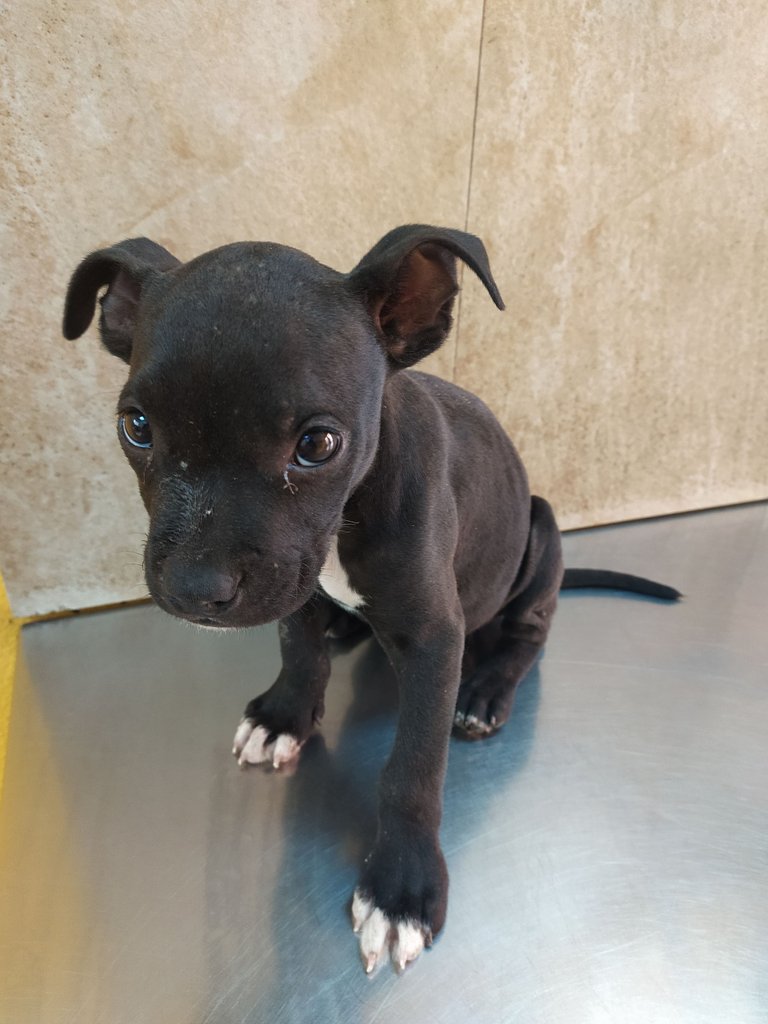
Photo taken by the author with Xiaomi Redmi 8
We can then affirm that “dark chocolates are toxic foods for dogs and cats with a higher risk than milk or white chocolates. The purer the cocoa, the greater the risk of intoxication." The reason is theobromine, a molecule that the cocoa tree itself generates during photosynthesis. It is not an artificial component that is added to chocolate for later consumption.

Font: Taked from Internet
The toxicity of chocolate in dogs depends on factors such as the amount ingested, the size of the dog, and the type of chocolate it has eaten. The dangerous dose of theobromine for these animals is considered to be between 250 and 500 mg/kilo of animal weight. Therefore, for a 5 kg dog to have poisoning from eating chocolate, she would have to ingest between 90 and 180g of dark chocolate. So, we see more frequently puppies and kittens or small breed animals. The high level of theobromine in dark chocolate means that only a small amount is needed for a dog to be poisoned: as little as 25 grams can be enough to poison a 20-kilogram dog.
As we mentioned above, when it comes to chocolate, size matters, just like in other aspects of life, doesn't it?
Our kittens are also among the most affected because today we know that chocolate is bad for cats. This is because caffeine and theobromine can cause health problems in cats or even cause death in high doses. The kittens are not especially sweet, out of curiosity or accidentally, they can try some food with chocolate.
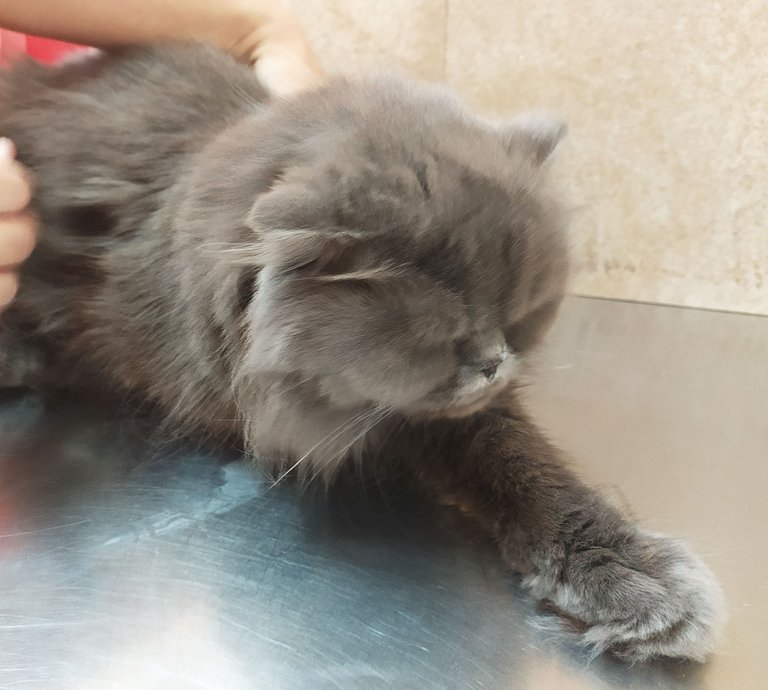
Photo taken by the author with Xiaomi Redmi 8
What would be the main symptoms of poisoning in my pet:
The symptoms that indicate a possible intoxication in cats due to ingestion of chocolate are variable and, in any case, they must be given maximum attention. These symptoms do not appear immediately after ingestion, but a few hours after taking. Keep in mind that they can even appear 24 or 48 hours later.
If your cat, for no apparent reason, begins to drink excess water and urinate, too, with an abnormal frequency, the reason may be that he has eaten some chocolate that he found within his reach. Vomiting and diarrhea are also frequent symptoms, since the animal's body tries to expel the chocolate.

Photo taken by the author with Xiaomi Redmi 8
In dogs, the initial phase of theobromine poisoning usually manifests as severe hyperactivity.
• Hyperexcitability
• Vomiting
• Diarrhea
• Tremors
• Fever
• Muscle tremors
• Irregular heartbeat
• Increased blood pressure
• Seizures
• Heart failure
• Death
So what do I do if my pet ate chocolate?
The first thing is do not ask for advice on Facebook, YouTube or even Hive, which is the most common, try to locate your veterinarian as soon as possible, of course, there are situations in which everything gets complicated: you are out of town, you do not have money to pay for a consultation, It happened in the middle of the night, so what to do?
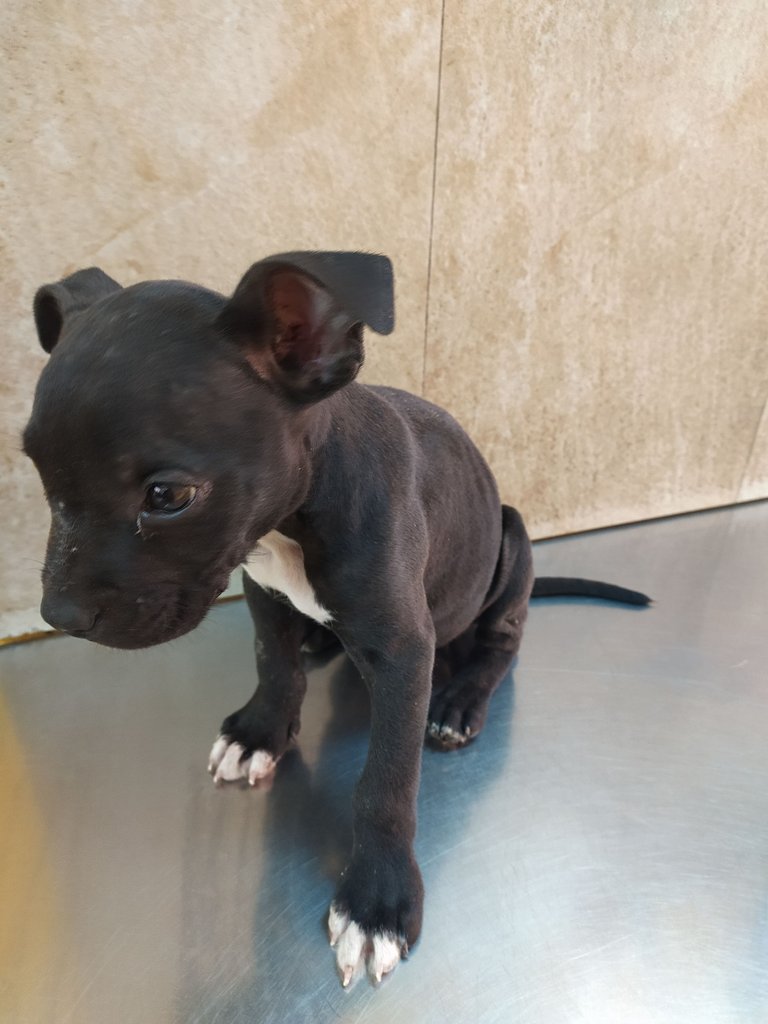
Photo taken by the author with Xiaomi Redmi 8
The usual treatment of theobromine poisoning (chocolate) consists of inducing vomiting within two hours after ingestion, this is easier and recommended in dogs than in cats because trying to make a cat vomit is an extreme measure that you will always have to consult the veterinarian beforehand, because if the cat presents symptoms such as tachycardia, drowsiness or seizures, it is totally inadvisable.
We must also take into account that induction of vomiting is not recommended if:
• Perhaps the amount of chocolate the animal has eaten is so small that it is not necessary to make it vomit. You could do more harm than good.
• Once 2-3 hours have elapsed since ingestion, making your cat vomit makes no sense, since the toxic substances, after the digestion time, are no longer in his stomach, but have passed into his intestine. At this point, vomiting won't do any good.
• The unconscious, convulsive, puppy or senile animal is not recommended to induce vomiting.
If despite all these recommendations you need to make your puppy or kitten vomit then:
• Hydrogen peroxide: The same that is used for human use. For this, the calculation of 2 milliliters (or cubic centimeters) is made for each kilogram of the animal's weight and, later, it must be mixed with water in equal parts. This is administered with the help of a needleless syringe directly into the animal's mouth. It is important not to do it, more than twice, with an interval of 10 to 15 minutes, since hydrogen peroxide can be highly irritating to the dog's digestive system, and in cats it can also cause digestive bleeding.
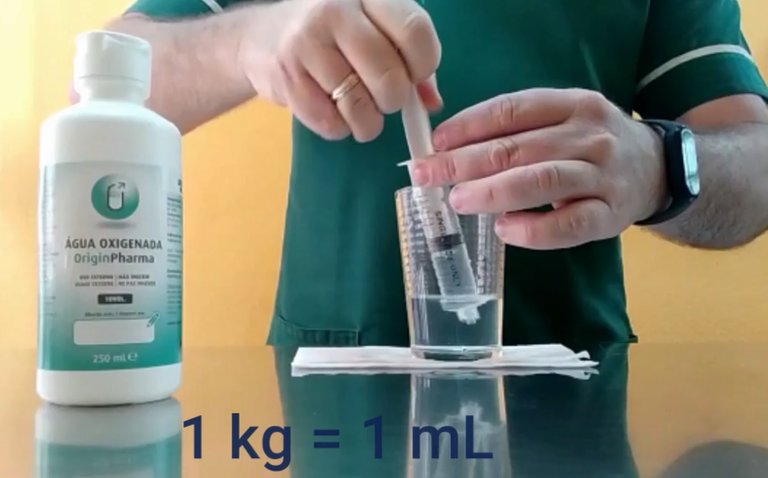
Photo taken by the author with Xiaomi Redmi 8
• Another of the alternatives that we have within our reach is common salt. A saturated solution of water with salt can be prepared. We add two full tablespoons of salt to a glass of water and apply a dose of 1 mL per kilogram of weight.
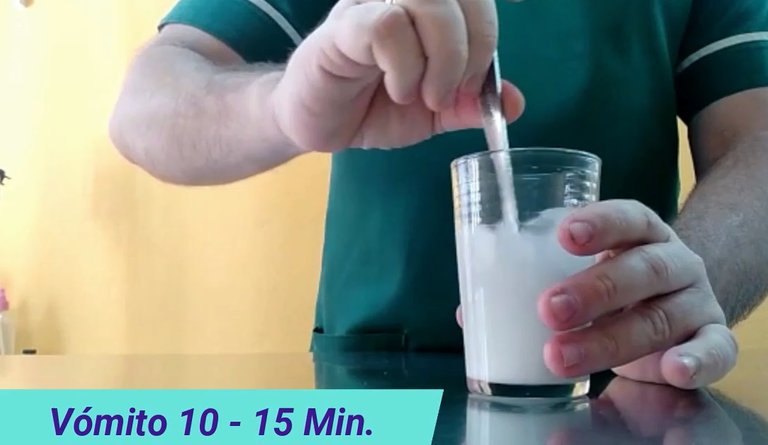
Photo taken by the author with Xiaomi Redmi 8
Definitely not mineral or cooking oil, milk, or other items you might find around the house to induce vomiting in your dog.
Activated carbon: This is the last emergency resource to treat chocolate poisoning in dogs since, although it helps to absorb the toxic components and prevent them from reaching the animal's blood, it can cause diarrhea, dehydration, aspiration of the substance through the respiratory tract and muscle tremors or convulsions, due to this it should always be administered under the recommendation and supervision of the veterinarian.
In the most serious cases, it should be treated in an emergency room because the most worrying symptoms: irregular heartbeat, increased blood pressure, seizures, heart failure are life or death matters, he would then have hospitalization, fluid therapy, and treatment of vital support.
I hope you liked this post and it was helpful, we will continue publishing more vital tips to save the lives of our best friends and improve their quality and life expectancy. In future posts we will be talking about other foods and medications that are also highly harmful to their health, as in the case of my previous post: https://hive.blog/hive-110011/@alveitar/como-matar-mi-gato-de-una-negligencia-how-to-kill-my-cat-from-negligence
Thank you very much
PS: All the photos were taken by me, in the medical consultation, in real situations.
ESPAñOL:
Hola muy buenas amigos de la comunidad HIVE, hoy quería comentarles acerca de venenos que pueden ser mortales para nuestras mascotas y que los consumimos frecuentemente en casa, pues nosotros ya no conseguimos vivir sin ellos.
Me imagino que todos ya hayan escuchado que el Chocolate, ese sabroso dulce que nos vuelve locos y que, según algunas investigaciones, puede estimular el centro del placer en nuestros cerebros, tanto como un buen sexo, es toxico para nuestros perros y gatos, pero......
¿Qué tan cierto es esto?
¿Qué cantidad debe comer mi mascota para que le haga daño?
¿Porque esto ocurre?
¿Qué puedo hacer si mi perro o gato accidentalmente ha ingerido este alimento?
Son algunas de las preguntas que responderemos. Quédense conmigo, no se vayan, que seremos lo más practico posible.
Hay que tener mucha precaución con los alimentos que se dejan al alcance de los perros y gatos, ya que, aunque ciertas comidas les gusten no significa que estas sean saludables para ellos. Efectivamente, el chocolate está entre la lista de alimentos tóxicos para perros y gatos siendo la razón una molécula llamada TEOBROMINA, que el organismo no es capaz de metabolizar correctamente. Además, el chocolate tiene otro problema y es su contenido en cafeína, un ingrediente también peligroso.
Podemos afirmar entonces que “los chocolates negros son alimentos tóxicos para perros y gatos de mayor riesgo que los chocolates con leche o blancos. Cuanto más puro es el cacao, mayor es el riesgo de intoxicación”. La razón es la teobromina, una molécula que el propio árbol del cacao genera durante la fotosíntesis. No es ningún componente artificial que se añada al chocolate para su consumo posterior.
La toxicidad del chocolate en los perros depende de factores como la cantidad ingerida, el tamaño del perro y el tipo de chocolate que ha comido. Se considera que la dosis de teobromina peligrosa para estos animales es de entre 250 y 500 mg/kilo de peso del animal. Por tanto, para que un can de 5 kg tuviera intoxicación por comer chocolate tendría que ingerir entre 90 y 180 g de chocolate negro. Por lo que vemos más frecuentemente cachorros y gatitos o animales de raza pequeña. El alto nivel de teobromina que tiene el chocolate negro hace que se necesite sólo una pequeña cantidad para que perro resulte envenenado: tan sólo 25 gramos pueden ser suficientes para envenenar a un perro de 20 kilos.
¿Como mencionamos encima, en cuestiones de chocolate el tamaño importa, como en otros aspectos de la vida, o no?
Nuestros mininos también son de los más afectados pues hoy sabemos que el chocolate es malo para los gatos. Se debe a que la cafeína y la teobromina, pueden causar problemas de salud a los felinos o, incluso, provocarles la muerte en dosis elevadas. Los mininos no son especialmente golosos, por curiosidad o de manera accidental, pueden probar algún alimento con chocolate.
Cuáles serían sus principales síntomas de intoxicación en mi mascota:
Los síntomas que indican una posible intoxicación en gatos por ingesta de chocolate son variables y, en cualquier caso, hay que prestarles máxima atención. Esos síntomas no aparecen de forma inmediata tras la ingesta, sino transcurridas unas horas desde la toma. Hay que tener en cuenta que pueden aparecer, incluso, en las 24 o 48 horas posteriores.
Si tu gato, sin motivo aparente, comienza a beber agua en exceso y a orinar, también, con una anormal frecuencia, puede que el motivo sea que ha comido algo de chocolate que encontró a su alcance. Los vómitos y diarreas son también síntomas frecuentes, dado que el organismo del animal intenta expulsar el chocolate.
Por el contrario, si su minino ha ingeridos dosis mucho más altas que estas podemos esperar:
• Taquicardia
• Temblores
• Convulsiones
• Coloración azulada de las mucosas (Cianosis).
Estos síntomas de intoxicación por chocolate en gatos requieren atención veterinaria urgente
En el caso de los perros la fase inicial del envenenamiento por teobromina normalmente se manifiesta con una hiperactividad severa.
• Hiperexcitabilidad
• Vómitos
• Diarrea
• Temblores
• Fiebre
• Temblores musculares
• Ritmo cardíaco irregular
• Aumento de la presión arterial
• Convulsiones
• Insuficiencia cardíaca
• Muerte
¿Entonces que hago si mi mascota ingirió Chocolate?
Lo primero es no pidas consejos en Facebook, YouTube o incluso Hive, que es lo más frecuente, intenta localizar a tu médico veterinario lo antes posible, claro, hay situaciones en las que todo se complica: estas fuera de la ciudad, no tienes dinero para pagar una consulta, paso en medio de la noche, ¿¿¿¿entonces que hacer????
El tratamiento habitual del envenenamiento por teobromina (chocolate) consiste en inducir el vómito en el plazo de dos horas tras la ingesta, esto es más fácil y recomendado en perros que en gatos pues intentar que vomite un gato es una medida extrema que siempre tendrás que consultar previamente con el veterinario, porque si el gato presenta síntomas como taquicardia, somnolencia o convulsiones está totalmente desaconsejada.
También debemos tomar en cuenta que, la inducción del vomito no se recomienda si:
• Tal vez, la cantidad de chocolate que ha ingerido el animal sea tan pequeña que no resulte necesario hacer que vomite. Podrías causarle más daño que beneficio.
• Una vez transcurridas 2-3 horas desde la ingesta, hacer que tu gato vomite no tiene sentido, ya que las sustancias tóxicas, pasado el tiempo de digestión, ya no están en su estómago, sino que han pasado a su intestino. En este punto, el vómito no servirá de nada.
• El animal inconsciente, convulsivo, cachorro o senil no se recomienda la inducción del vomito.
Si a pesar de todas estas recomendaciones necesitas hacer vomitar a tu perrito o gatico entonces:
• Agua oxigenada: La misma que se emplea para uso humano. Para esto se hace el cálculo de 2 mililitros (o centímetros cúbicos) por cada kilogramo de peso del animal y, posteriormente, se debe mezclar con agua en partes iguales. Esta se administra con la ayuda de una jeringa sin aguja directamente en la boca del animal. Es importante no realizarlo en más de dos ocasiones, con un intervalo de 10 a 15 minutos, ya que el agua oxigenada puede ser altamente irritante para el sistema digestivo del perro, en los gatos puede además provocar sangrado digestivo.
• Otra de las alternativas que tenemos a nuestro alcance es la sal común, se puede preparar una solución saturada de agua con sal, añadimos dos cucharadas llenas de sal en un vaso de agua y aplicamos una dosis de 1 mL por kilogramo de peso.
Definitivamente no aceite mineral o de cocina, leche u otros elementos que pueda encontrar en casa para inducir el vómito del perro.
Carbón activado: Este es el último recurso de emergencia para tratar una intoxicación por chocolate en los perros ya que, si bien ayuda a absorber los componentes tóxicos e impedir que lleguen a la sangre del animal, puede producir diarrea, deshidratación, aspiración de la sustancia por la vía respiratoria y temblores musculares o convulsiones, debido a esto siempre debe administrarse bajo recomendación y supervisión del médico veterinario.
En los casos más graves debería ser atendido en una sala de urgencia pues los síntomas más preocupantes: ritmo cardíaco irregular, aumento de la presión arterial, convulsiones, insuficiencia cardíaca son de vida o muerte, llevaría entonces régimen de internamiento, fluidoterapia, y tratamiento de soporte vital.
Espero que este post les gustara y les fuera de ayuda, continuaremos publicando más consejos vitales para salvar la vida de nuestros mejores amigos y mejorar su calidad y esperanza de vida. En próximos post estaremos hablando de otros alimentos y medicamentos que también resultan altamente perjudiciales para su salud, como el caso de mi anterior publicación: https://hive.blog/hive-110011/@alveitar/como-matar-mi-gato-de-una-negligencia-how-to-kill-my-cat-from-negligence
Muchas gracias
PS: Todas las fotos fueron tomadas por mí en la consulta médica, en situaciones reales.